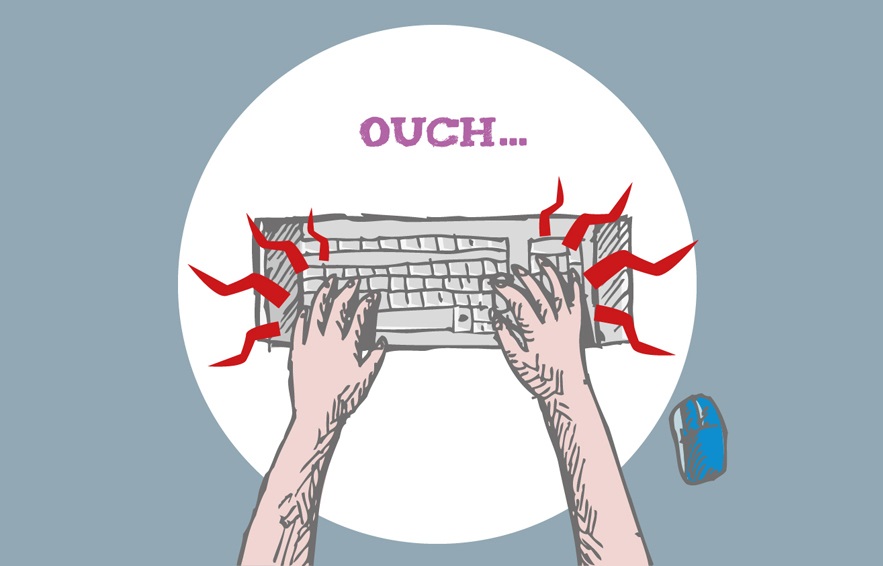Richard Kruckeberg on the steps organisations can take towards better MSD control.
Costs associated with management of work-related musculoskeletal disorders through worker’s compensation insurance significantly impact employers in the United States, as well as globally. Worker’s compensation direct costs are $20 billion/year to the employer, yet, the direct costs of worker’s compensation often represent only 20 to 30 percent of the overall injury expenses.[1] Considering the present and potential improved economy and job expansion could lead to greater future worker’s compensation cost and risks.
Indirect costs, including overtime, temporary labour, increased training, supervisor time, production delays, unhappy customers, increased stress, and property or equipment damage represent several times the direct cost of the injury. A 2015 BMUS Executive Summary reports the total direct and indirect cost in the US for MSD injuries at $874 billion. [2] Injury costs, both direct and indirect, will have a much greater impact on the employers’ overall costs than worker’s compensation insurance rate decreases.
The current method for management of worker’s compensation insurance reportable incident (employees’ claims) cost by employers involves multiple industry, location specific systems such as bill review, medical case management and employee involvement and activism, including employee choice of care provider, as examples, whose compliance, are dependent on local management participation. These methods are mainly evaluated by financial costs after the occurrence of the loss, based on the revenue of the plant or specific employer location.
There is no known process that allows a combination of the pre-emptive sourcing of worker’s compensation reportable incidents to be gathered by employers. A preemptive process would aid in managing and modifying processes to reduce the reportable incidents prior to their conversion to an actual occurrence cost and allow employees to access educational methods for improving their individual wellness. This process would further identify the propensity of compliance by the employee, so as to allow further evaluation by the employer of the statistical probability of a worker’s compensation source of a reportable incident occurring.
OSHA developed guidelines to assist industry in preventing and/ or minimising work injuries. [1] The ultimate goal is an increase in revenue, a reduction in cost or an avoidance of cost. The methods that meet OSHA guidelines for injury prevention and reducing worker’s compensation cost are as follows:
Early Recognition
Identifying minor issues before they become a major concern of when they occurred is core standard for OSHA/NIOSH. This addresses concerns individuals have often before while they require significant medical involvement. Once they become “clinical” issues they can impair normal work or personal activities. A study by the National Council on Compensation Insurance Inc. released in 2015 showed that delayed injury reporting by two weeks can increase comp claim costs up to 51%. [5] That is only the tip of the iceberg.
OSHA estimates 50% of MSD go unreported at workplaces.[1] Pransky et al reported “Although less than 5% of workers had officially reported a work-related injury or illness during the past year, over 85% experienced work-related symptoms, 50% had persistent work-related problems, and 30% reported either lost time from work or work restrictions because of their ailment” for reasons of fear of retribution, loss of work time, or other reasons. [3] Presenteeism, being on the job but less efficient due health issues, cost 31% of daily wages benefits for every equivalent lost workday [4] or 4.4 hours per employee [7]. A program should encourage early intervention to address issues before they become a recordable or absenteeism or before they become a presenteeism matter.
Conservative Management
“Good recovery is more likely if you can control the pain, stay at work (even if you have some pain), and keep active, perhaps with modified activities.”[6] Identifying specific activities for specific body parts concerned and conditioning those parts and keeping the employee at work can mitigate escalation.
Systematic Monitoring
Following up on employee musculoskeletal concerns keep employee/employer on the same page regarding the resolution process of the MSD issue. As noted above any condition not identified within two weeks can become more expensive to deal with.[3][8] If the employer can touch pointing areas that have relatively high rates of issues and specific body areas that may be at risk and take a proactive role in ergonomics, which can significantly reduce worker’s compensation claims.
Education
Education about MSD has been a strong indicator of prevention as noted by Dokuztug et al. [7] NIOSH advocates education about MSDs and ergonomics as a proven method of reducing MSDs. The education of the activity to deal with the area of concern empowers the employee so that issues do not become clinical. [9] Prevention techniques could be available for workforce regarding MSD by body part.
Accessibility
Surveying employees regarding health concerns is advocated to direct human resources on areas of work that may need attention as to work methods or equipment needs. Methods of surveying employees in the past included telephonic and mail. In today’s computer/internet savvy worker a product available via the internet or smartphone app would provide continuous access to gather information and correlate in regards to ranked need. In a study by Wantland, et al in the Journal of Medical Internet Research, found a significant improvement of knowledge with internet-based programs over non-internet-based programs. [6]
The above is information for the systematic and methodical way of identifying sources and recommending options to address correction of the sources’ effect that may lead to reducing employees’ reportable incident claims against the employers’ worker’s compensation insurance. This would allow for lower costs, associated with worker’s compensation, and provide information on areas of adjustment in the workplace for ergonomic assessment or improvement.
Need help managing the risks among your workforce? Check out our range of health and safety courses, including our award-winning DSE course Healthy Working.
References:
- OSHA Prevention of Musculoskeletal Disorders in the Workplace. Retrieved March 1,2016 , www.osha.gov/SLTC/ergonomics/
- BMUS {United States Bone and Joint Initiative} (2016) Executive Summary 2016. Rosemont, IL American Academy of Orthopedic Surgeons. Retrieved June 25, 2016, from www.boneandjointburden.org
- Pauly MV, Nicholson S, Polsky D, Bergner ML and Sharda C. Valuing reductions in on-the-job illness:’Presenteeism’ form managerial and economic perspectives. Health Economics, 17(4), 469-485 2008
- Pransky G, Snyder T, Dembe A, Himmelstein J. Under-reporting of Work-related Disorders in the Workplace: a case study and review of literature. Ergonomics 42(1), 171-182 2010
- Harris S. Delayed reporting of workplace injuries can raise comp claim cost up to 51%. Business Insurance internet posted Jun 7, 2015
- HSE-Infoline (2005) Improved early pain management for musculoskeletal disorders. London Health and Safety Executive
- Dokuztug F, Alik E, Aydemir A, Issever H, Yilmaz A, Erer M. Early Symptoms of Work-Related Musculoskeletal Disorders in Hand and Upper Extremity in the Poultry Industry. J Med. Sci., 6(3): 305-313 May-June 2006
- Kovacs FM, Abraiah V, Zamora S, Fernandez C. The transition from acute to subacute and chronic low back pain: a study based on determinants of quality of life and prediction of chronic disability. Spine 2005 Aug 1;30(15): 1786-92
- Hakkinen A, Kautiainen H, Hannonen P, Ylinen J. Strength training and stretching versus stretching alone in treatment of patients with chronic neck pain: a randomised one year follow up study. Clinical Rehabil. 2008 Jul;22(7): 592-600




